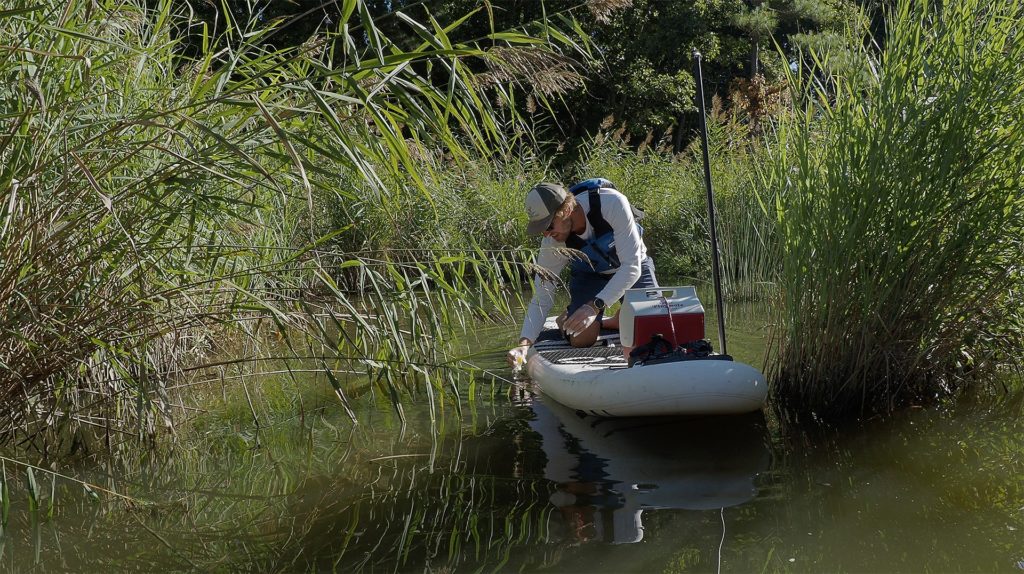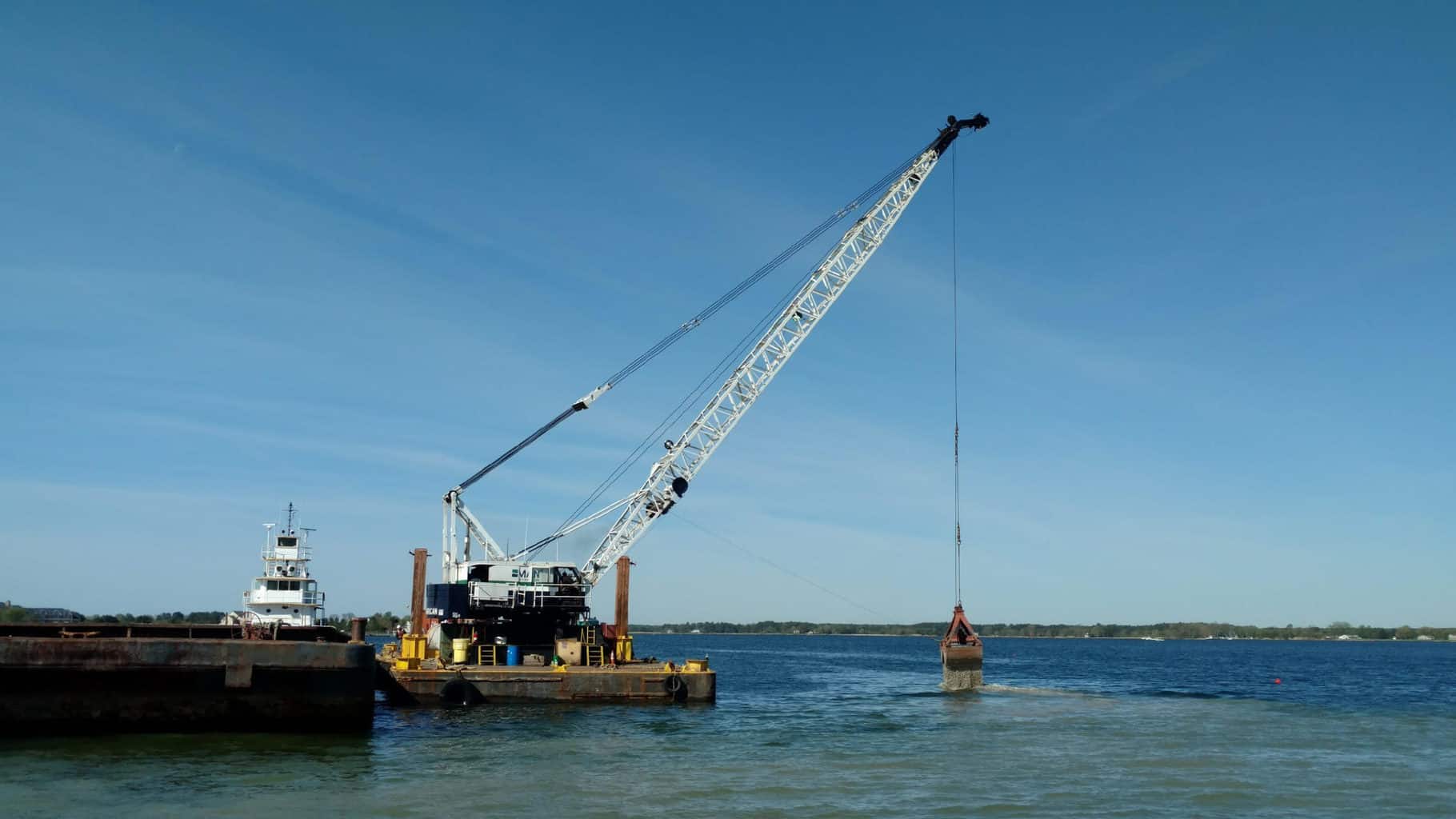One of Maryland’s leading riverkeeper organizations is calling for the state to increase testing for “forever chemicals” in local waterways—after a national report found more of the chemicals in Maryland waterways than anywhere else.
The Waterkeeper Alliance tracked levels of PFAs (per- and polyfluoroalkyl substances), manmade chemicals that end up in waterways and can be highly toxic over time. The study looked at PFA levels in 114 watersheds around the country, including 16 in the Chesapeake region.
Maryland had the highest total number of detections and the highest number of different PFAS compounds of any state.
The study’s authors call out Piscataway Creek in the upper Potomac rivershed for having the highest concentration of PFAs. La Trappe Creek, a tributary of the Choptank River, had the second highest number of detections in the state for three of the five most prevalent compounds.
ShoreRivers, whose Eastern Shore riverkeepers took the samples analyzed for the Waterkeeper Alliance study, is sounding the alarm on these concerning numbers.
“The results of this study clearly demonstrate the need to urgently increase monitoring for these chemicals in our rivers,” said Matt Pluta, ShoreRivers’ Choptank Riverkeeper and Director of Riverkeeper Programs. “Once we begin detecting PFAS in local waterways and on our land, it’s only a matter of time before we begin to detect them in the fish, crabs, oysters, and even venison that we eat.”
Source of Chemicals
Where do these “forever chemicals” come from, anyway? They are used in manufacturing to make Teflon non-stick cookware, firefighting foam, stain-resistant fabrics, water-repellant clothing, fast-food wrappers, microwave popcorn bags and have at times been found in Scotchgard. They don’t break down and have been found in people, wildlife and the environment itself.
With continued exposure, PFAs have been linked to cancer, as well as thyroid, liver and kidney disease, and developmental problems in babies.
ShoreRivers says “concerning levels” of PFAs were detected in five out of eight water samples they collected. The waterways with high levels were La Trappe Creek (near the Trappe wastewater treatment plant), Mill Creek on the Wye East River, Morgan Creek on the Chester River, and another Mill Creek, this one in the Sassafras River watershed.
This study underscores the importance of safeguarding against wastewater pollution, Pluta says. “The PFAS results from La Trappe Creek at the point where the Town of Trappe’s wastewater treatment plant discharges underscore the need to upgrade and modernize the treatment technology at these older systems before contamination levels get worse.”
Next Steps
Still, ShoreRivers believes that more testing is needed to present a clearer picture of the presence of these chemicals and their effects on Eastern Shore waterways.
Virginia was not in the top five southeast-region states with PFA detections. Pennsylvania did have sites in the lower Susquehanna River watershed with high levels.
To read the entire report from Waterkeeper Alliance in full, visit waterkeeper.org/pfas.
-Meg Walburn Viviano




